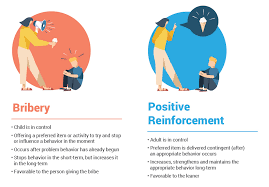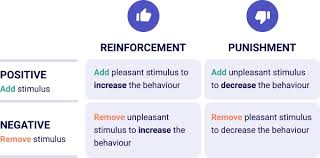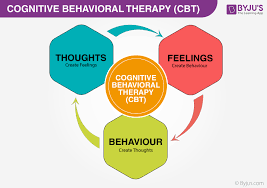Q. Describe the strategies for behavioural change. Do you think that these strategies are useful for the organisation? Discuss.
Strategies for
Behavioral Change in Organizations
Behavioral change within
organizations is crucial for growth, improvement in employee performance, and
adapting to new challenges. Various strategies exist for driving this change,
and understanding how to implement them effectively is key to their success.
These strategies range from psychological techniques to organizational policies
designed to shift the behavior of individuals or groups. Let's break down these
strategies, examine how they can be applied in an organizational context, and
assess their effectiveness.
Positive reinforcement is
a strategy that encourages desirable behaviors by offering rewards or
recognition. It is based on the idea that behaviors followed by positive
outcomes are more likely to be repeated. In an organizational setting, this can
involve financial rewards, promotions, public recognition, or even informal
acknowledgment.
For instance, rewarding
employees for exceeding performance goals, meeting deadlines, or demonstrating
collaborative behaviors can reinforce these actions. Over time, this can create
a culture of excellence where employees strive to meet or exceed expectations.
Positive reinforcement helps to establish desired behaviors as part of the
organizational culture.
Relevance to
Organizations:
This strategy is highly
relevant in fostering motivation and productivity. When employees see a direct
link between their efforts and positive outcomes, they are more likely to
remain engaged and committed to their roles. However, it’s essential to ensure
that rewards are meaningful and align with the goals of the organization.
Without this alignment, rewards can become ineffective or even
counterproductive, leading to complacency or unhealthy competition.
2. Negative
Reinforcement
Negative reinforcement
involves removing a negative condition or stimulus to increase the likelihood
of a behavior being repeated. This can involve reducing the frequency of
unpleasant tasks or providing a more pleasant work environment as a way to
encourage the repetition of certain behaviors.
For example, an
organization might reduce the number of repetitive tasks an employee has to do
after they show improvement in their core responsibilities. The goal is to
remove obstacles or create a more favorable environment for individuals to
operate in, thereby encouraging them to continue with behaviors that lead to
this improvement.
Relevance to
Organizations:
While negative
reinforcement can be effective, it is a strategy that must be used carefully.
If employees come to expect the removal of unpleasant tasks without necessarily
earning it, the organization may create a sense of entitlement, potentially
leading to disengagement. Furthermore, excessive use of this strategy can
undermine the organization's ability to hold employees accountable for their
work.
3. Behavioral
Modeling
Behavioral modeling is a
strategy where employees learn by observing the actions of others, particularly
leaders or colleagues who demonstrate behaviors that the organization wishes to
promote. This method is particularly powerful in organizational settings, where
learning through observation can be a faster and more effective way to change
behaviors than trial and error.
For instance, if a
manager demonstrates collaborative behavior, such as working across departments
or actively seeking input from team members, others may be inclined to adopt
these behaviors themselves. The idea is to establish role models who exemplify
the values and behaviors that the organization wants to instill.
Relevance to
Organizations:
Behavioral modeling is a
practical strategy, particularly in organizations that value teamwork,
leadership, and innovation. It helps new or less experienced employees adjust
to the organizational culture more quickly and promotes a consistent set of
values across the organization. However, the success of this strategy heavily
relies on the quality of the role models. If leaders fail to demonstrate the
desired behaviors themselves, it can create confusion and undermine the
strategy's effectiveness.
4. Cognitive
Behavioral Therapy (CBT)
Cognitive Behavioral
Therapy (CBT) is a psychological approach that focuses on changing the patterns
of thinking and behavior that contribute to negative outcomes. While typically
used in individual therapeutic settings, CBT can be adapted for organizational
change, particularly in areas such as stress management, conflict resolution,
and improving employee resilience.
In the context of an
organization, CBT can be used to help employees reframe negative thoughts about
their work, tackle stressors more effectively, and build healthier work habits.
This approach is often incorporated into employee wellness programs to enhance
mental health and reduce workplace burnout.
Relevance to
Organizations:
Incorporating CBT
techniques into organizational strategies can significantly enhance employee
well-being and productivity. A workforce that can manage stress, think
positively, and overcome mental barriers is more likely to contribute to a
positive organizational culture. However, it may require specialized training
for both employees and managers, and there may be resistance from individuals
who do not see the value in psychological interventions at work.
5. Goal Setting
and Self-Regulation
Goal setting is a
well-established strategy for behavioral change. It involves setting clear,
measurable objectives and providing feedback on progress toward those goals.
The process often incorporates self-regulation techniques, where individuals
monitor their own performance, adjust their behavior, and take corrective
actions to achieve their goals.
For example, setting
quarterly performance targets for employees and providing ongoing feedback
allows them to track their progress, celebrate small wins, and adjust their
strategies if they are not meeting expectations. Self-regulation also empowers
employees to take ownership of their development, which can lead to more
intrinsic motivation.
Relevance to
Organizations:
Goal setting is essential
in aligning individual performance with organizational objectives. When goals
are aligned with the broader mission and values of the organization, employees
are more likely to be motivated and engaged. However, goal setting must be
realistic and achievable. Setting overly ambitious goals can lead to
frustration, burnout, and decreased morale, which undermines the intended
behavior change.
6. Nudge Theory
Nudge theory is based on
the concept of subtly influencing people's behavior through small changes in
their environment or the way choices are presented. Rather than relying on
overt rewards or punishments, nudging aims to change behavior by altering the
context in which decisions are made.
For instance, in an
organizational setting, employers could use nudges to encourage healthier work
habits. This might include placing healthy snacks in break rooms, ensuring
stairs are more visible and accessible than elevators, or sending gentle
reminders to take breaks. The goal is to design an environment that “nudges”
employees toward better behavior without them necessarily realizing it.
Relevance to
Organizations:
Nudge theory can be
highly effective in promoting behavioral change without the need for intrusive
policies or drastic measures. It works well in fostering incremental change
over time. However, its effectiveness depends on the ability to identify subtle
but impactful nudges. Overuse or poorly designed nudges can backfire, creating
a sense of manipulation or coercion among employees.
7. Organizational
Culture Change
One of the most powerful
strategies for behavioral change is altering the organizational culture.
Organizational culture refers to the shared values, beliefs, and behaviors that
shape the work environment. By changing the culture, an organization can influence
the behaviors of all its members, from leadership to entry-level employees.
For example, an
organization that wishes to foster innovation might promote a culture that
encourages risk-taking, experimentation, and collaboration. This cultural shift
would be supported through policies, leadership behavior, and daily practices
that reinforce these values. Culture change is a long-term strategy that
requires sustained commitment from all levels of the organization.
Relevance to
Organizations:
Cultural change can be
one of the most impactful ways to influence behavior, as it affects not just
individual actions but the collective mindset of the entire organization. A
strong culture of collaboration, inclusivity, or innovation can help an organization
stay competitive and responsive to changes in the market. However, cultural
changes can be difficult to implement and may face resistance, particularly in
established organizations where the culture is deeply ingrained.
8. Training and
Development
Training and development
programs are designed to equip employees with the knowledge, skills, and
behaviors needed to perform their jobs effectively. These programs often target
specific behaviors, such as leadership skills, communication techniques, or customer
service excellence.
For example, an
organization may offer training on conflict resolution, helping employees
develop the skills to handle interpersonal challenges in a constructive way.
Ongoing development ensures that employees continue to grow and refine their
behaviors in line with organizational goals.
Relevance to
Organizations:
Training is essential for
ensuring that employees have the competencies required for their roles. It is
particularly useful when there is a clear gap between current behaviors and
desired outcomes. Well-designed training programs can improve employee performance,
reduce turnover, and enhance overall organizational effectiveness. However,
training alone is often not enough to change behavior unless it is supported by
follow-up activities, such as coaching or performance reviews.
Conclusion: Are
These Strategies Useful for Organizations?
Behavioral change
strategies are not just theoretical concepts; they are practical tools that
organizations can use to improve employee performance, enhance organizational
culture, and drive long-term success. The usefulness of each strategy depends
on the specific context of the organization, including its goals, workforce,
and leadership style.
In most cases, a
combination of these strategies will be necessary for effective behavior
change. For example, while goal setting might motivate employees to perform
well in the short term, cultural changes and leadership modeling may be
required to sustain those behaviors in the long term. Furthermore,
organizations should be mindful of the potential challenges, such as resistance
to change or misalignment between rewards and organizational goals, which can
hinder the effectiveness of these strategies.
Ultimately, the
strategies for behavioral change can be highly useful for organizations that
are committed to creating a positive and productive work environment. By
understanding the different approaches and implementing them thoughtfully,
organizations can foster lasting change that supports both individual growth
and organizational success.













0 comments:
Note: Only a member of this blog may post a comment.